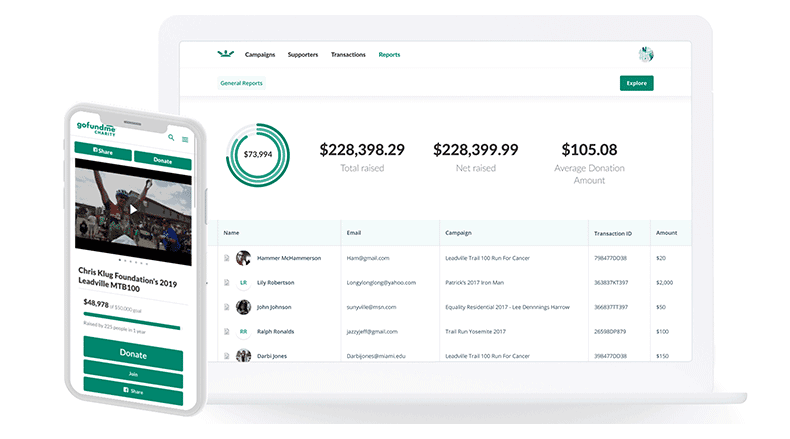Online Fundraising: Proven Techniques to Increase Even More Funds for Your Nonprofit
Online Fundraising: Proven Techniques to Increase Even More Funds for Your Nonprofit
Blog Article
Understanding the Important Parts of Nonprofit Fundraising: Secret Practices for Enhancing Monetary Sustainability
Not-for-profit fundraising is a diverse venture that needs a nuanced understanding of a number of necessary elements to make sure monetary sustainability (nonprofit agency). From calculated preparation that lines up with mission-driven goals to the cultivation of meaningful benefactor partnerships, each component plays a critical duty in the total success of fundraising initiatives. Moreover, the assimilation of effective interaction and neighborhood involvement techniques boosts outreach and impact. Nevertheless, the adoption of technology provides both opportunities and obstacles that can considerably affect fundraising end results. What certain practices can companies carry out to navigate these intricacies and protect their financial future?
Strategic Fundraising Planning
Strategic fundraising preparation is a vital component for any type of not-for-profit organization intending to attain its objective properly. This process entails setting clear, measurable objectives that align with the company's total objectives while taking into consideration the distinct demands of the community it serves. A well-structured fundraising strategy not only determines possible revenue sources yet also details the strategies and strategies required to involve those sources.

Additionally, leveraging information analytics can notify decision-making by giving understandings right into contributor behavior and trends, permitting nonprofits to tailor their fundraising strategies appropriately. Routine testimonials and updates of the fundraising strategy are important to respond to transforming situations and arising chances. Ultimately, a thorough calculated fundraising strategy functions as a roadmap for nonprofits, promoting financial security and enabling them to satisfy their mission successfully.
Building Benefactor Relationships
Building strong benefactor relationships is necessary for the long-term sustainability of any type of not-for-profit organization. These connections are the structure whereupon successful fundraising efforts are developed, as they cultivate trust, loyalty, and interaction amongst supporters. Nonprofits need to focus on cultivating significant connections with their benefactors, identifying that each interaction can considerably influence their readiness to contribute.
To efficiently develop contributor partnerships, companies need to concentrate on individualized involvement approaches. This entails understanding the interests, motivations, and giving patterns of individual donors, allowing tailored communication that resonates with them. Regular updates on organizational progress, program outcomes, and the impact of contributions reinforce the value of their support.
In addition, expressing gratitude is essential. Acknowledging donations promptly and regards not just improves connections however likewise encourages ongoing assistance. Occasions such as contributor recognition events provide opportunities for individual links and neighborhood building.
Inevitably, supporting contributor relationships goes beyond transactional communications; it symbolizes a partnership where benefactors really feel valued and important to the mission. By spending time and sources in relationship-building, nonprofits can enhance contributor retention, rise lifetime offering, and ensure economic stability for their initiatives.
Effective Interaction Approaches
Reliable interaction approaches play a critical function in reinforcing the solid contributor partnerships that nonprofits strive to grow. Clear and consistent messaging is essential for conveying the mission, vision, and impact of the company. Expressing the distinct value proposal helps contributors comprehend exactly how their contributions make a substantial difference.
Making use of multiple interaction channels-- such as emails, social networks, e-newsletters, and in-person events-- makes certain that messages get to a varied target market - nonprofit agency. Customizing communication to various contributor segments can enhance interaction; as an example, significant contributors may appreciate in-depth reports on financing allotments, while smaller benefactors might choose concise updates highlighting essential accomplishments
Narration is another powerful tool in not-for-profit communication. Sharing engaging narratives regarding recipients can stimulate emotional reactions and cultivate a deeper link with the reason. Transparency about financials and program outcomes develops trust fund, motivating contributors to continue to be engaged over time.
Engaging the Area
Community engagement is crucial for nonprofits seeking to enhance their influence and foster a sense of possession among regional stakeholders. Developing a robust link with the neighborhood not just boosts visibility however likewise constructs trust this link fund, important for lasting fundraising initiatives. By proactively entailing community participants in decision-making procedures, nonprofits can straighten their objectives with the requirements and desires of the populace they serve.
To successfully engage the community, nonprofits should prioritize transparency and open interaction. Organizing public forums, workshops, and educational sessions enables meaningful discussion, where stakeholders can voice their viewpoints and add to the organization's vision. In addition, working together with neighborhood organizations, institutions, and civic organizations can create collaborating collaborations that leverage shared sources for greater influence.
An additional essential aspect of area engagement is identifying and celebrating local contributions. Acknowledging volunteers, donors, and advocates cultivates a sense of belonging and commitment, urging ongoing involvement. In addition, showcasing success tales and the concrete benefits of area assistance can motivate others to add.
Eventually, aggressive neighborhood interaction grows a network of supporters that are purchased the not-for-profit's objective, ensuring long-term support and enhanced economic sustainability.
Using Technology and Tools

One essential device for nonprofits is a thorough donor monitoring system. These systems allow companies to preserve in-depth documents of contributor communications, payments, and choices, helping with personalized communication and involvement (nonprofit agency). Furthermore, making use of online fundraising systems permits nonprofits to reach a wider audience, making it simpler for supporters to add via different networks, consisting of social media sites and email campaigns
Furthermore, making use of project management devices can aid streamline internal procedures, ensuring that fundraising teams stay arranged and concentrated on their objectives. Automation software can additionally simplify repeated jobs, such as sending out thank-you e-mails or pointers, liberating team time for even more critical efforts.
Verdict
To conclude, the important elements of nonprofit fundraising incorporate critical planning, strong benefactor relationships, effective interaction, community engagement, and the usage of innovation. These components collectively contribute to improving financial sustainability and strength within nonprofit companies. By implementing finest practices in these locations, nonprofits can better straighten their goals with their mission, thereby optimizing their influence and making sure lasting viability look what i found in a competitive philanthropic landscape. A detailed method is essential for fostering long-lasting support and functional efficiency.
Additionally, leveraging information analytics can notify decision-making by offering insights into benefactor behavior and trends, enabling nonprofits to customize their fundraising techniques accordingly.Building strong contributor connections is vital for the long-term sustainability of any not-for-profit company.Reliable interaction methods play an essential duty in strengthening the solid benefactor connections that nonprofits aim to cultivate.One important tool for nonprofits is a comprehensive contributor administration system.In conclusion, the necessary components of not-for-profit fundraising include tactical preparation, strong benefactor connections, reliable communication, area interaction, and the application of technology.
Report this page